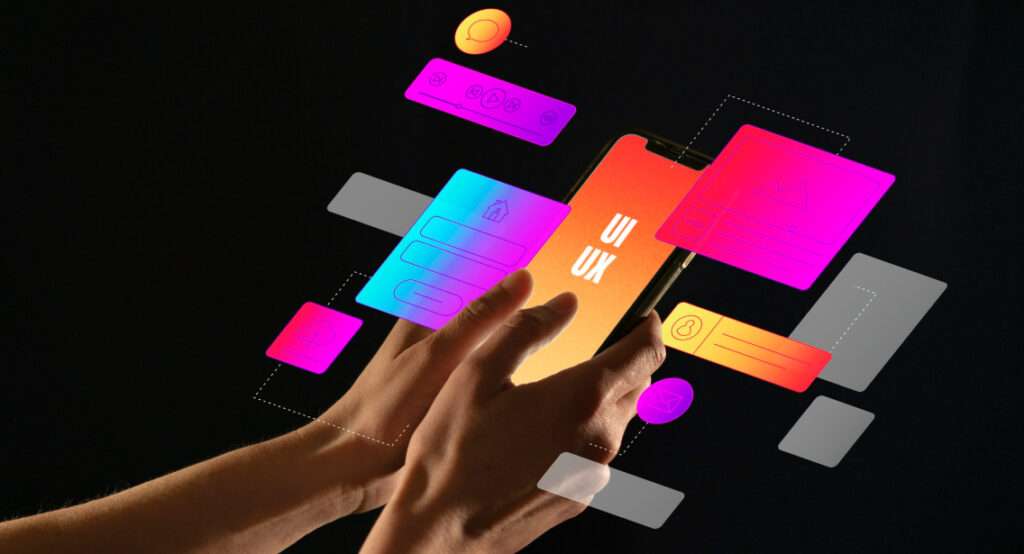What is UX/UI Design?
UXUI design is the combination of user experience (UX) and user interface (UI) design. It is an essential part of creating a successful product, as it focuses on how a product looks and functions. By understanding the needs and motivations of users.
UI design looks at how a product looks and feels, while UX design looks at how users interact with the product. By understanding user needs, preferences, and behavior, UXUI designers can ensure that a product is intuitive and easy to use.
UX/UI Design in Product Development
User experience (UX) and user interface (UI) design play a critical role in the success of digital products. UX design focuses on creating a positive experience for users when they interact with a product, while UI design focuses on designing the visual and interactive elements of the product.
Understanding user needs, Creating user personas, Designing user interfaces, Conducting user testing, Continual improvement there are some ways in which UX/UI design contributes to product development.
To create a successful product, the UX and UI designers must work closely together to create a cohesive and efficient design.
User experience (UX) design
User experience (UX) design plays a critical role in creating successful digital products. UX design focuses on understanding user needs, behaviors, and motivations, and creating a product that is intuitive, easy to use, and effective in meeting user goals and objectives. Here are some ways in which UX design contributes to the success of digital products.
In this blog, we will discuss some of the most common UX design methods.
Understanding
User Needs
Creating
User Personas
Wireframes
Prototypes
User Testing
Understanding user needs
UX design starts with user research to gain a deep understanding of the target audience’s needs, preferences, and pain points. User research involves techniques such as user interviews, surveys, and usability testing. This research helps to identify user goals, motivations, and behaviors.
Creating user personas
Based on the user research, UX designers create user personas to represent the target audience. User personas are fictional characters that represent different user types and their characteristics, needs, and goals. User personas help to ensure that the product is designed for the target audience’s needs and preferences.
Wireframing
After creating user personas, UX designers create wireframes to visualize the layout and functionality of the product. Wireframes are low-fidelity designs that show the basic structure and navigation of the product. Wireframing helps to ensure that the product’s layout and functionality align with the user’s needs and preferences.
Prototyping
Once the wireframes are finalized, UX designers create high-fidelity prototypes that simulate the final product’s look and feel. Prototyping helps to test the product’s usability, functionality, and user experience before launching it. Prototyping also enables designers to gather feedback from users and stakeholders, which helps to refine the design.
User Testing
Finally, UX designers conduct user testing to validate the design and ensure that it meets the target audience’s needs and preferences. User testing involves observing users as they interact with the product and gathering feedback on usability, functionality, and user experience. User testing helps to identify any usability issues and refine the design to create a user-centered product.
User Interface (UI) design
User Interface (UI) design is the process of creating visually appealing and functional interfaces for software, websites, and mobile applications. The goal of UI design is to create an interface that is user-friendly and intuitive to use. There are various UI design methods that designers use to achieve this goal.
In this blog, we will discuss some of the most common UI design methods.
Sketching and
Wireframe
Keep it Simple
Visual Hierarchy
Design for
Accessibility
Test and Iterate
Sketching and Wireframe
Sketching and wireframing are the initial stages of UI design, where designers put their ideas on paper or create basic digital prototypes. Sketching helps designers to quickly explore different design ideas without getting caught up in details, while wireframing is a more structured approach that focuses on the layout and content of the interface.
Keep It Simple
UI design should be simple and easy to use. A cluttered design can be overwhelming and confusing to the user. UI design should always be user-centered. Designers should consider the needs and preferences of the target audience and create a design that is easy to use and understand.
Visual Hierarchy
Visual hierarchy refers to the use of size, color, and placement to create a clear visual hierarchy of information. This helps the user to quickly understand the importance of the information and navigate the product.
Design For Accessibility
Visual hierarchy refers to the use of size, color, and placement to create a clear visual hierarchy of information. This helps the user to quickly understand the importance of the information and navigate the product.
Test and Iterate
UI design should be tested and iterated upon based on user feedback. Testing can help to identify issues with the design and make necessary changes to improve the user experience.
